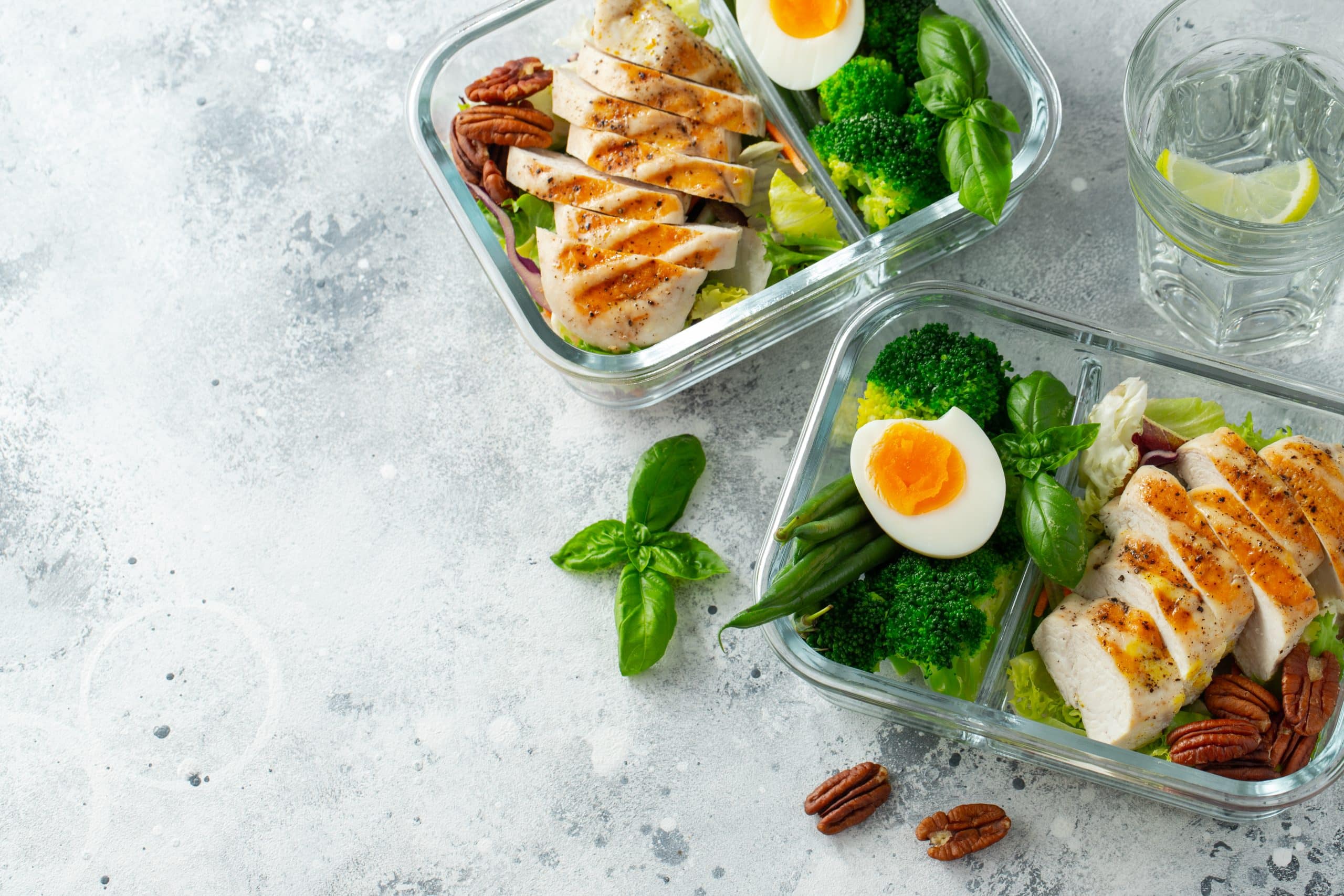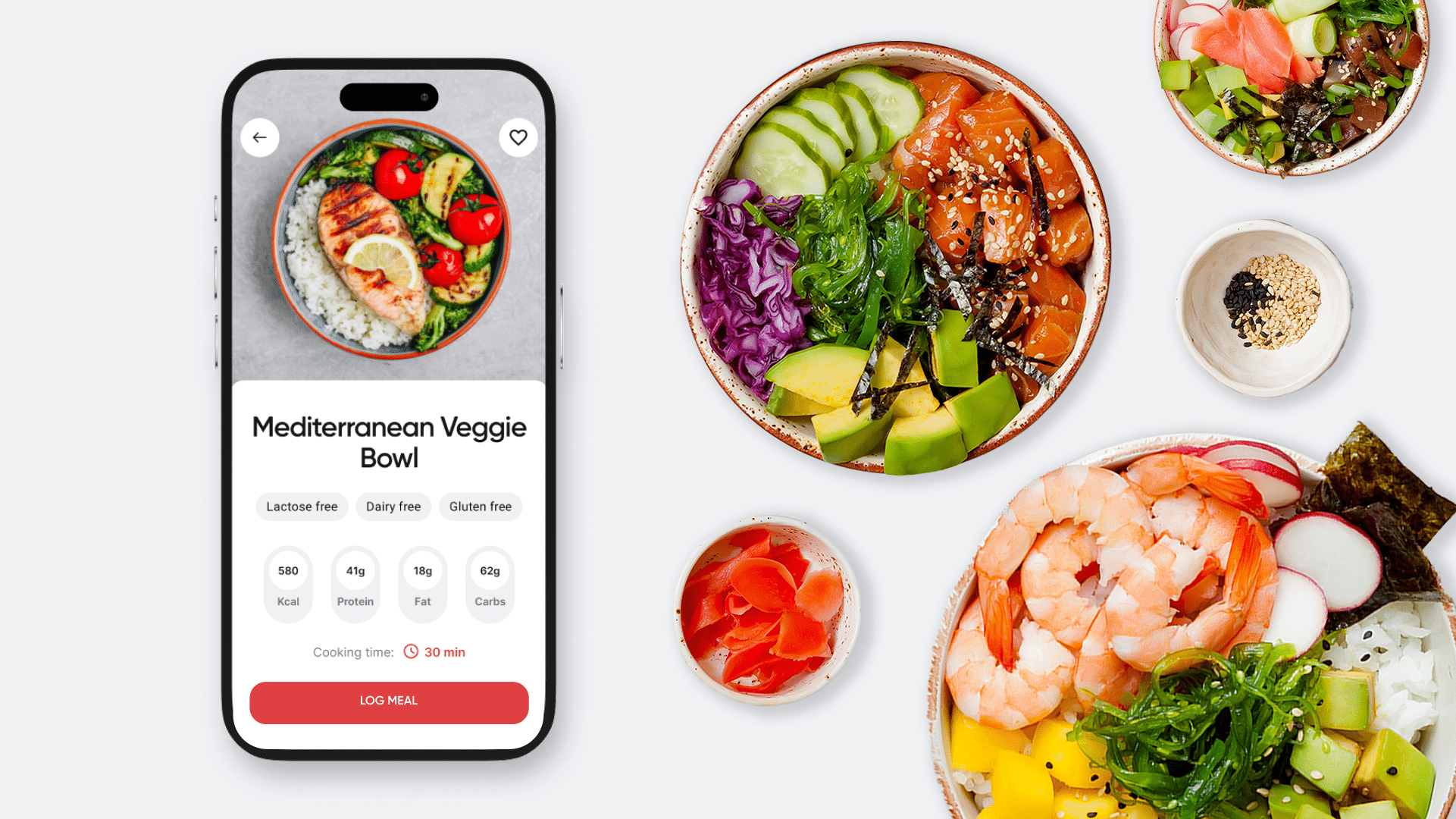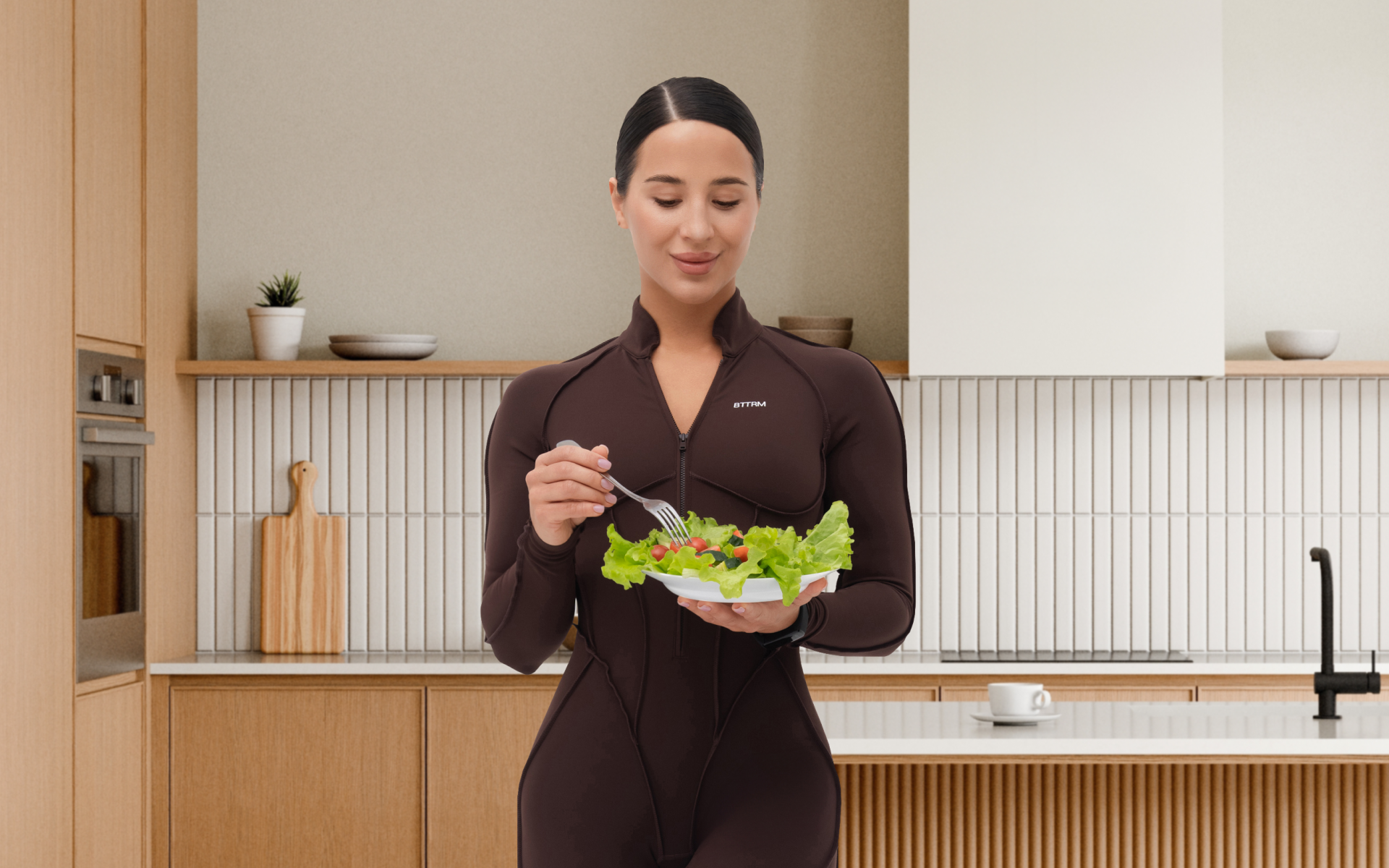Bulking is when bodybuilders or fitness enthusiasts intentionally consume more calories than they need for a set period with the aim of gaining weight, primarily in the form of muscle.
For many, the idea of bulking can be exciting as it allows for increased food intake, and you may be tempted to eat everything in sight. Although high-calorie foods can help with gaining mass, there’s a need to consider the nutritional quality of these calories to ensure they benefit your body and fitness goals.
Your bulking phase will be more effective and healthy if you balance macronutrients well and choose foods that fuel your workouts and recovery.
A carefully compiled meal plan can go a long way to adding muscle without the unnecessary fat. Here’s everything you need to start your 3,100-calorie meal plan for a lean bulk.
Is 3,100 Calories Good for Bulking?
Depending on your body size, activity level, and other individual factors, your daily calorie needs will vary. 3,100 calories may be a good starting point for bulking if you’re an average-sized individual with moderate to high levels of physical activity.
However, you should keep in mind that this number is not set in stone and may need to be adjusted based on your progress and goals.
Calculating your specific daily caloric needs with the help of a nutritionist or online calculator can give you more accurate information to tailor your meal plan to your body and fitness goals.
The following figures are based on the USDA’s standard daily caloric needs for adult females and males (2).
- Active women aged 19 – 30 years require approximately 2,400 to 2,600 calories per day
- Active men in the same age range need approximately 3,000 to 3,200 calories daily
Adding 300-500 calories or 15% to your individual energy needs may put you in the 3,100-calorie range, which is ideal for a lean bulking phase.
In a previous post, 2,600-Calorie Meal Plan, we discussed the food options and macronutrient breakdown for a lean bulking meal plan targeting 2,600 calories.
What Will My Weight Be if I Eat 3,000 Calories a Day?
You may gain weight if you eat 3,000 calories a day, but exactly how much you gain is dependent on a combination of factors, including your metabolic rate, exercise routine, and body composition.
When you’re trying to gain weight, it’s sometimes recommended to add approximately 300-500 calories to your maintenance energy needs. Other experts recommend increasing energy intake by around 15%. You can experiment within this range to see what works best for you.
This weight gain will likely not be lean muscle mass alone. Some of it may come from fat storage, which is why it’s important to have a balanced meal plan and exercise routine to ensure that as much of your weight gain as possible is muscle.
Check out our specific Muscle-Gaining Meal Plans for tips on how to optimize your 3,100-calorie meal plan for lean bulking.
How Many Meals to Eat for 3,000 Calories a Day?
You can eat anywhere from three to six meals a day on a 3,100-calorie meal plan for bulking.
Some people prefer three larger meals, while others find it easier to eat smaller meals more regularly throughout the day. Both options can work well as long as you hit your daily caloric and macro goals.
To eat 3,000 calories a day cheaply, you’ll need to plan your meals and snacks in advance, making sure that they align with your nutritional needs.
Some ways meal planning can help you hit both your nutritional and budget goals are:
- Buying in bulk: This can save you money and time by purchasing larger quantities of food at once.
- Seasonal produce: Opting for fruits and vegetables that are in season can be cheaper than out-of-season options.
- Preventing impulses: By planning your meals in advance, you’ll be less likely to make impulsive and potentially more expensive food choices.
- Managing portion sizes: Measuring your portions with measuring cups or a food scale can help you stay within your caloric and macronutrient goals while also preventing overeating (7). After measuring for a while, you’ll probably be able to eyeball quantities fairly accurately.
- Good use for leftovers: Preparing meals in bulk and saving leftovers for later will save you time and money, in addition to preventing food waste.
- Including budget-friendly protein sources: Cheaper protein options such as dried beans, lentils, eggs, certain fish, and chicken can be incorporated into your meal plan to help you hit your daily protein needs without breaking the bank.
Reasons why BetterMe is a safe bet: a wide range of calorie-blasting workouts, finger-licking recipes, 24/7 support, challenges that’ll keep you on your best game, and that just scratches the surface! Start using our app and watch the magic happen.
3,100-Calorie Meal Plan High-Protein, Low-Carb
Protein is essential for building muscle and low-carbohydrate diets are quite popular (3). Here’s a sample 5-day high-protein, low-carbohydrate meal plan to start you off (5):
Day 1
- Breakfast: Herb omelet with fried tomatoes and kiwi berry smoothie (792 calories)
- Lunch: Protein southwest scramble with simple kale salad (917 calories)
- Snack: Chicken and avocado salad (404 calories)
- Dinner: Seared steak with spinach tomato salad (988 calories)
Macros: 3,101 calories, 135.8 g net carbs, 188.7g fat, 188 g protein, 60.9 g fiber
Day 2
- Breakfast: Pumpkin pie spiced waffles with ginger, apple, and mint green smoothie (868 calories)
- Lunch: Scallion-crusted arctic char with bachelor Brussels sprouts (888 calories)
- Snack: Almonds (410 calories)
- Dinner: Portobello steaks with avocado chimichurri and Brussels sprout slaw (932 calories)
Macros: 3,098 calories, 131.8 g net carbs, 207.2 g fat, 148.3 g protein, 59.8 g fiber
Day 3
- Breakfast: Scrambled eggs with chorizo and kale and apple juice (890 calories)
- Lunch: Quick broiled salmon with basil cucumber gazpacho (700 calories)
- Snack: Easy avocado with shrimp (384 calories)
- Dinner: Pork rind-crusted chicken with spinach and broccoli salad (1,131 calories)
Macros: 3,104 calories, 94.3 g net carbs, 205.8 g fat, 192.5 g protein, 41.6 g fiber
Day 4
- Breakfast: Zucchini scramble with coconut, apple, cinnamon smoothie (888 calories)
- Lunch: Shrimp and mushroom zoodles with summer pepper and tomato salad (783 calories)
- Snack: Avocado (322 calories)
- Dinner: Balsamic chicken and mushrooms with asparagus herb delight (1,106 calories)
Macros: 3,099 calories, 101.8 g net carbs, 183.5 g fat, 233.3 g protein, 53.7 g fiber
Day 5
- Breakfast: Powerball smoothie with pecans (822 calories)
- Lunch: Maple-mustard glazed pink salmon and mixed greens with cranberry vinaigrette (1,018 calories)
- Snack: Tuna stuffed pepper (400 calories)
- Dinner: Lemon pepper baked tilapia with lemon steamed broccoli (858 calories)
Macros: 3,097 calories, 108.5 g net carbs, 178.2 g fat, 249.5 g protein, 42.7 g fiber
Read more: A Beginner Intermittent Fasting Meal Plan To Fit Your IF Journey
3,100-Calorie Meal Plan Keto
Keto diets are famed for their claims of benefits for weight loss. If you want to bulk up on an incredibly low-carb, high-fat diet, here’s what it may look like (5):
Day 1
- Breakfast: Egg, avocado, and bacon scramble with vanilla walnut blueberry yogurt (847 calories)
- Lunch: Seared sesame-crusted tuna with easy sauteed eggplant (771 calories)
- Snack: Chilled cucumber avocado soup (444 calories)
- Dinner: Low-carb skillet pizza and sauteed spinach with pine nuts (1,034 calories)
Macros: 3,097 calories, 57.9 g net carbs, 235.1 g fat, 168 g protein, 33.6 g fiber
Day 2
- Breakfast: Lettuce wrap breakfast tacos with basic protein shake (842 calories)
- Lunch: Mustard and shallot salmon and spinach salad with blackberries (802 calories)
- Snack: Greek yogurt with blueberries, walnuts, and honey (405 calories)
- Dinner: Pan-fried steak with sauteed Brussels sprouts with onion and garlic (1,049 calories)
Macros: 3,098 calories, 69.4 g net carbs, 232.2 g fat, 170.8 g protein, 24.9 g fiber
Day 3
- Breakfast: Cheesy scrambled eggs with blueberry pudding (795 calories)
- Lunch: Keto pork schnitzel with easy sauteed spinach (857 calories)
- Snack: Tuna salad (472 calories)
- Dinner: Salt and pepper chicken wings with simple arugula and bacon bits salad (976 calories)
Macros: 3,101 calories, 39.2 g net carbs, 228.8 g fat, 197.9 g protein, 40.5 g fiber
Day 4
- Breakfast: Cauliflower eggs with protein-based yogurt (1,039 calories)
- Lunch: Caramelized cauliflower steaks with keto protein shake (716 calories)
- Snack: Coconut peach smoothie (379 calories)
- Dinner: Creamy steak and spinach with Caprese salad (964 calories)
Macros: 3,097 calories, 69.3 g net carbs, 216.6 g fat, 203 g protein, 29.5 g fiber
Day 5
- Breakfast: Ham and asparagus frittata with bacon (789 calories)
- Lunch: Rosemary lemon grilled scallops with sundried tomato and avocado salad (1,036 calories)
- Snack: Keto pizza chips (412 calories)
- Dinner: Seared scallion with poached eggs and grilled asparagus (854 calories)
Macros: 3,092 calories, 56.5 g net carbs, 219.1 g fat, 199.6 g protein, 27.3 g fiber
BetterMe app will provide you with a host of fat-frying fitness routines that’ll scare the extra pounds away and turn your body into a masterpiece! Get your life moving in the right direction with BetterMe!
3,100-Calorie Meal Plan Vegetarian
You can still bulk up even on a vegetarian diet. Just ensure you get adequate protein into your diet. Here’s what a high-calorie vegetarian meal plan looks like (5):
Day 1
- Breakfast: Oatmeal with apple and banana with chocolate date shake (931 calories)
- Lunch: Banana bruschetta and broccoli with peanut sauce (741 calories)
- Snack: Chocolate banana smoothie (468 calories)
- Dinner: Avocado pesto pasta with wilted spinach and corn salad (962 calories)
Macros: 3,102 calories, 396 g net carbs, 105.1 g fat, 110.5 g protein, 72.2 g fiber
Day 2
- Breakfast: Peanut butter bagel with green kiwi smoothie (1,006 calories)
- Lunch: Soba noodles and coconut curry with zucchini spears (731 calories)
- Snack: Strawberry potato shake (441 calories)
- Dinner: Tofu kari with easy spinach and scallion salad (918 calories)
Macros: 3,097 calories, 364.9 g net carbs, 119.4 g fat, 133.4 g protein, 53 g fiber
Day 3
- Breakfast: Fried egg sandwich and cinnamon herb delight (948 calories)
- Lunch: Black bean and corn quinoa and lime avocado milkshake (704 calories)
- Snack: Maple vinaigrette couscous salad (372 calories)
- Dinner: Sundried tomato and mushroom pasta with peppers cucumber and avocado salad (1,082 calories)
Macros: 3,105 calories, 335.5 g net carbs, 131.7 g fat, 115.8 g protein, 65 g fiber
Day 4
- Breakfast: Avocado and tomato toast with blueberry yogurt (742 calories)
- Lunch: Noodles with spicy peanut sauce and sliced bell pepper (732 calories)
- Snack: Strawberry grape granola parfait (476 calories)
- Dinner: Spaghetti with mushrooms, garlic, and oil with pinto bean salad (1,142 calories)
Macros: 3,093 calories, 342.9 g net carbs, 107.2g fat, 139 g protein, 64.6 g fiber
Day 5
- Breakfast: Oat and cottage pancakes with nonfat yogurt (1,008 calories)
- Lunch: Vegan mac and “cheeze” with avocado and vegetable salad (733 calories)
- Snack: Crustless cucumber sandwich (400 calories)
- Dinner: Cold peanut noodle salad with carrots (958 calories)
Macros: 3,099 calories, 337.4 g net carbs, 105.3 g fat, 161.9 g protein, 51.9 g fiber
Read more: Vegan Weight Loss Meal Plan and Prep Tips
FAQs
How can I eat 3,000 calories a day?
To eat 3,000 calories a day, plan your meals and snacks in advance, making sure they align with your nutritional needs. Incorporate nutrient-dense foods such as lean proteins, complex carbohydrates, healthy fats, and fruits and vegetables into every meal.
You should also aim for a balanced intake of macronutrients, including protein, carbohydrates, and fat to support muscle gain while minimizing fat storage.
Is 3k calories a lot?
3,000 calories may be a lot for some, but it may be just right or not enough for others. It depends on individual factors such as body size, activity level, and metabolic rate.
For someone who is aiming to gain weight and muscle through a bulking phase, 3,000 calories may be an appropriate amount. Such a person is also likely to be active and may require more calories to support their physical activity.
At the same time, someone who is sedentary and not looking to gain weight would likely consider 3,000 calories to be a lot.
Consulting a registered dietitian or using an online calculator can help determine your specific daily caloric needs.
Will I gain muscle if I eat 3,000 calories a day?
You’re quite likely to gain muscle if you eat 3,000 calories a day, provided that you also have an adequate exercise routine in place. Consuming more calories than your body uses for daily functions and energy expenditure is essential for muscle growth (6).
However, the type of foods you consume will play a significant role in how much of this weight gain comes from lean muscle versus fat storage. Therefore, it’s worth paying attention to your macronutrient breakdown and choosing more nutrient-dense, high-protein meals over ultra-processed and high-calorie but nutrient-poor options.
How much protein is 3,000 calories?
Protein should make up 10-35% of your energy intake. For a 3,000-calorie per day diet, protein intake should be between 300 and 1,050 calories, or 75-263 grams of protein. This is a wide range, but it can be narrowed down based on individual factors such as body weight, activity level, and fitness goals.
The recommended protein intake for an adult is 0.8 grams per kilogram of their body weight (4).
However, depending on your fitness goals, activity level, and personal preferences, you may need more or less protein. For example, someone who is looking to build muscle may aim for a higher protein intake, approximately 1.0 – 1.6 grams, or even up to 2 grams per kilogram of body weight (4).
Is 2,500 calories too much?
2,500 calories may be too much for sedentary women and men whose recommended daily caloric intakes are 2,000 and 2500 calories, respectively. However, for those who are looking to gain weight or bulk up, 2,500 calories may be an appropriate amount.
Again, individual factors such as body size and activity level play a significant role in determining whether 2,500 calories is too much or not enough.
What does 2,500 kcal look like?
2,500 kcal can look like:
- Breakfast: 2 scrambled eggs, 1 whole-wheat toast with avocado, half a grapefruit, and a glass of milk (around 500 kcal)
- Snack: Banana smoothie made with almond milk, protein powder, and chia seeds (around 300 kcal)
- Lunch: Grilled chicken breast with quinoa and roasted vegetables (around 600 kcal)
- Snack: Greek yogurt with mixed berries and a small handful of almonds (around 300 kcal)
- Dinner: Baked salmon with brown rice, steamed broccoli, and a side salad (around 700 kcal)
- Dessert: Small serving of dark chocolate (around 100 kcal)
This is just one example, and there are many ways you can reach 2,500 kcal while maintaining a balanced and nutritious diet.
The Bottom Line
3,100 calories for a lean bulk may sound like a lot, but with proper meal planning and smart food choices, it is both achievable and affordable. We recommend more nutrient-dense, high-protein meals over ultra-processed options and you should make sure to incorporate a good balance of macronutrients in your meals.
DISCLAIMER:
This article is intended for general informational purposes only and does not serve to address individual circumstances. It is not a substitute for professional advice or help and should not be relied on for making any kind of decision-making. Any action taken as a direct or indirect result of the information in this article is entirely at your own risk and is your sole responsibility.
BetterMe, its content staff, and its medical advisors accept no responsibility for inaccuracies, errors, misstatements, inconsistencies, or omissions and specifically disclaim any liability, loss or risk, personal, professional or otherwise, which may be incurred as a consequence, directly or indirectly, of the use and/or application of any content.
You should always seek the advice of your physician or other qualified health provider with any questions you may have regarding a medical condition or your specific situation. Never disregard professional medical advice or delay seeking it because of BetterMe content. If you suspect or think you may have a medical emergency, call your doctor.
SOURCES
- Counting calories: Get back to weight-loss basics (2023, mayoclinic.org)
- Dietary Guidelines for Americans, 2020-2025 and Online Materials (2020, dietaryguidelines.gov)
- Dietary Protein and Muscle Mass: Translating Science to Application and Health Benefit (2019, ncbi.nlm.nih.gov)
- Dietary protein intake and human health (2016, pubmed.ncbi.nlm.nih.gov)
- Eat This Much (n.d., eatthismuch.com)
- Is an Energy Surplus Required to Maximize Skeletal Muscle Hypertrophy Associated With Resistance Training (2019, frontiersin.org)
- Understanding the science of portion control and the art of downsizing (2018, ncbi.nlm.nih.gov)










